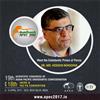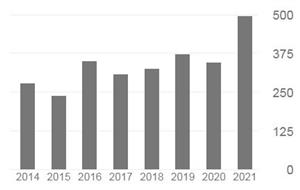The Effect of Blood Contamination on the Compressive Strength and Surface Microstructure of Mineral Trioxide Aggregate
Aim: To investigate the effects of whole, fresh human blood contamination on compressive strength and surface microstructure of grey and tooth-coloured mineral trioxide aggregate (MTA). Methodology The materials investigated were grey ProRoot MTA Original (Dentsply Tulsa Dental, Johnson City, TN, USA) and tooth-coloured ProRoot MTA (Dentsply Tulsa Dental). Three groups of 10 custommade cylindrical moulds (internal dimensions 6 ± 0.1 mm length and 4 ± 0.1 mm diameter) were filled with tooth-coloured MTA. In the control group, MTA was mixed with water and exposed to water. In the second group, MTA was mixed with water and exposed to whole, fresh human blood. In the third group, MTA was mixed with and exposed to whole, fresh human blood. These three groups were then duplicated using grey MTA, creating a total of 60 samples. A predetermined amount of MTA and appropriate liquid were
triturated in a plastic mixing capsule then subjected to ultrasonic energy after placement in the moulds. After 4 days of incubation, specimens were subjected to compressive strength testing. The surface microstructure of one extra specimen in each group was examined using scanning electron microscopy. Data were subjected to a two-way anova.
Results: Regardless of MTA type, the mean compressive strength values of both experimental groups, which were in contact with blood, were significantly less than that of the control groups (P < 0.0001). In experimental groups in which MTA was mixed with water and exposed to blood, there was a significant difference (P < 0.0001) in compressive strength between tooth-coloured MTA (30.37 ± 10.16 MPa) and grey MTA (13.92 ± 3.80 MPa).
Conclusion: When blood becomes incorporated into MTA, its compressive strength is reduced. In clinical situations in which blood becomes mixed with MTA, its physical properties are likely to be compromised.














